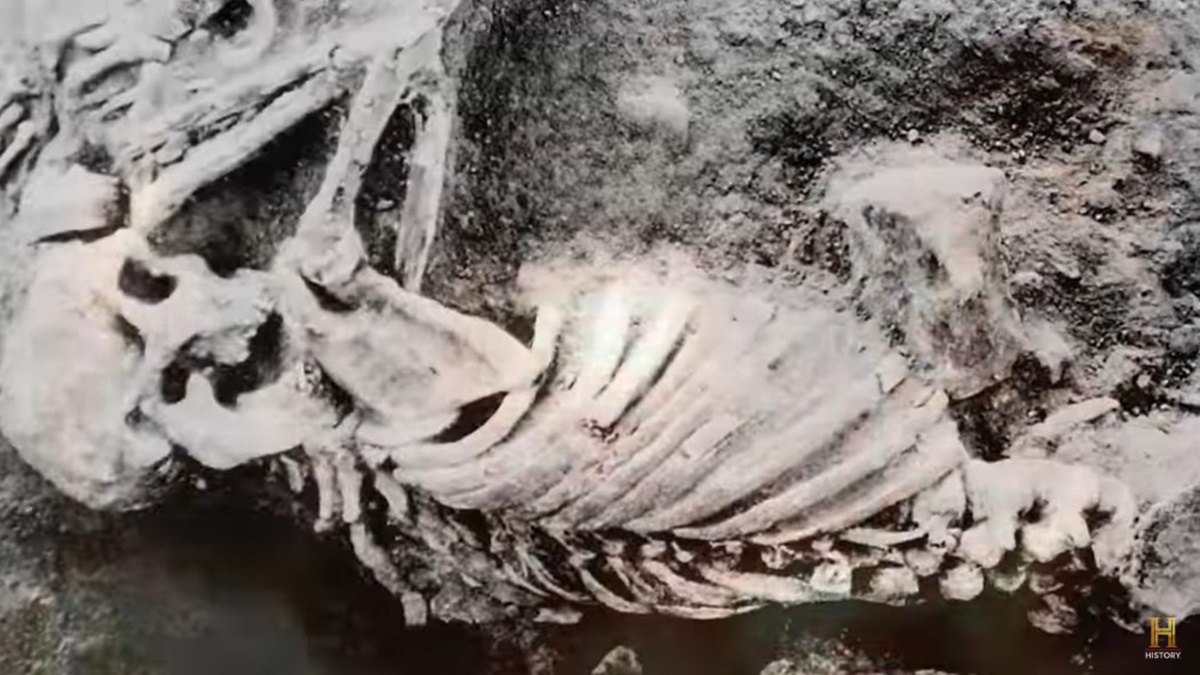
A nuclear bomb allegedly wiped out the ancient city of Mohenjo-Daro, ancient astronaut theorists claim. Pic credit: History/YouTube
The ancient city known to modern historians as Mohenjo-Daro emerged as a bustling center of the Indus Valley civilization about 4,500 years ago. However, something terrible happened that brought about a sudden catastrophic end to the civilization after several centuries of prosperity.
According to ancient astronaut theorists, evidence from archeology and ancient Hindu scriptures suggests that hostile aliens caused a massive nuclear explosion that wiped out Mohenjo-Daro and nearby urban centers of the ancient Indus Valley civilization.
An episode of the Ancient Aliens on the History Channel (see video below) explores the evidence supporting the sensational claim that Mohenjo-Daro was the epicenter of a nuclear bomb explosion more than 3500 years before Hiroshima and Nagasaki.
Paranormal Papers also reported that researchers claimed on Netflix’s Encounters miniseries that aliens visited the Chernobyl scene of the 1986 nuclear disaster to help limit the spread of toxic radiation.
Mohenjo-Daro means “Mound of the Dead”
Archeologists discovered the ruins of the city, located in the Sindh province of modern Pakistan, in the early 1900s. Further studies confirmed it was contemporary with the earliest civilizations of human history, including ancient Egypt and Sumer.
The city was likely already a bustling center of commerce and culture by at least 2,500 BCE. It was one of the main urban centers in the world at the height of its prosperity.
According to cryptozoologist Franklin Ruehl, the builders of Mohenjo-Daro carefully planned its construction. It was like a modern city with well-laid-out streets and an efficient sewage system.
But it had fallen into ruins by the middle of the first millennium BCE.
Researchers are uncertain what the ancient residents called the city. But they christened the ruins Mohenjo-Daro, meaning “Mound of the Dead,” in the Sindhi language.
Was Mohenjo-Daro the epicenter of a nuclear blast?
Ancient astronaut theorists note that the physical evidence of a sudden violent end inspired archeologists to name the site Mohenjo-Daro (“Mound of the Dead”).
They claim that archeological evidence proves the city was the epicenter of a powerful nuclear blast that happened sometime before 1500 BC.
Researchers found the city piled with skeletons, suggesting the people were going about their routine daily activities when they met a sudden catastrophic end.
Researchers reportedly found skeletons with 50 times the normal radiation levels. They found remains of artifacts, such as pottery, in conditions suggesting exposure to intense heat possible only at the epicenter of a powerful atomic bomb explosion.
The walls of the homes also bore evidence of exposure to heat and radiation. The vitrified (glasslike) walls suggested exposure to conditions caused only by nuclear blasts.
Ancient Hindu texts allegedly explain what happened
According to theorists, the ancient Hindu Mahabharata explains what happened at Mohenjo-Daro. The texts describe the catastrophic effects due to the detonation of a nuclear device over the city. The explosion, accompanied by intense heat, instantaneously reduced the city to smoking ruins.
The Mahabharata also described the after-effects of the explosion on survivors that were consistent with radiation poisoning.
According to the ancient astronaut theorist Giorgio Tsoukalos, the survivors had boils erupting on their skins. Their hair and nails fell off.
After the alleged explosion, a fearsome bird-like monster called the Garuda appeared in the skies over the city. The monster flew over the city, generating destructive winds and spreading terror across the land.
According to theorists, the winds were similar to blast winds following nuclear explosions.
Investigative journalist Philip Coppens added that anomalies, such as areas of higher-than-normal radiation, still exist today in the Indus River Valey region.
They indicate that a nuclear event occurred in the region in the past.
